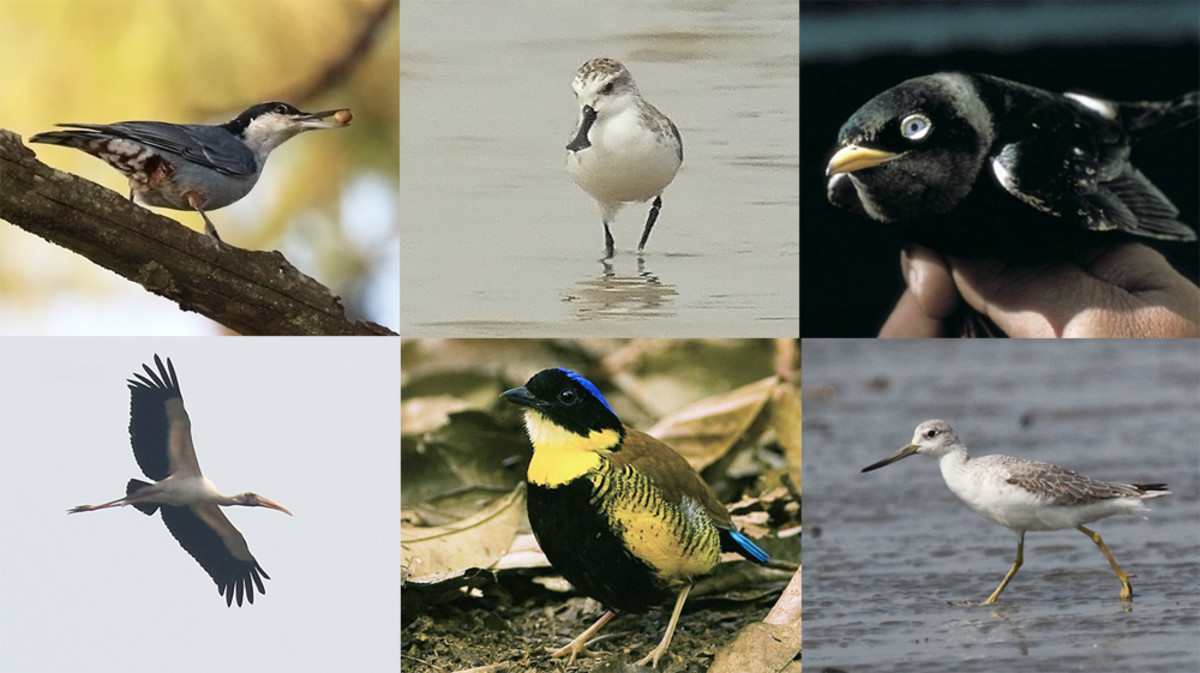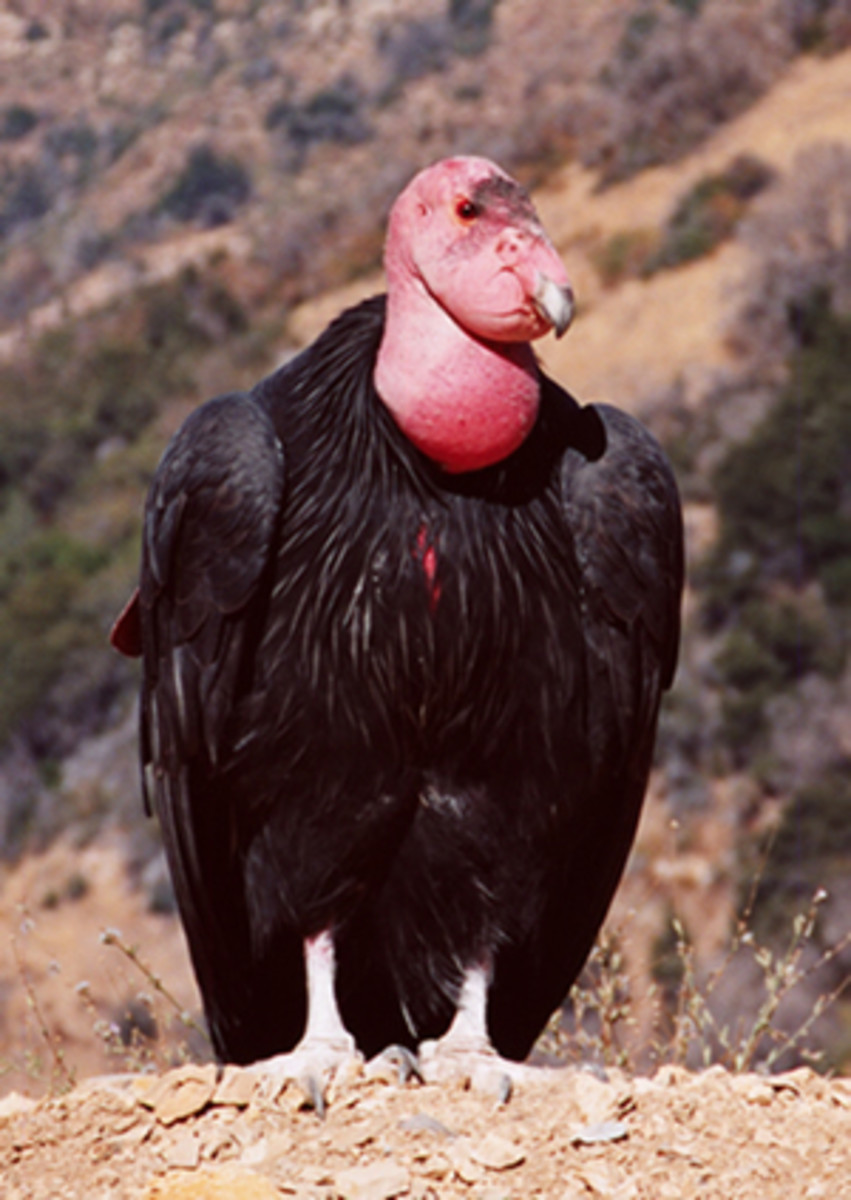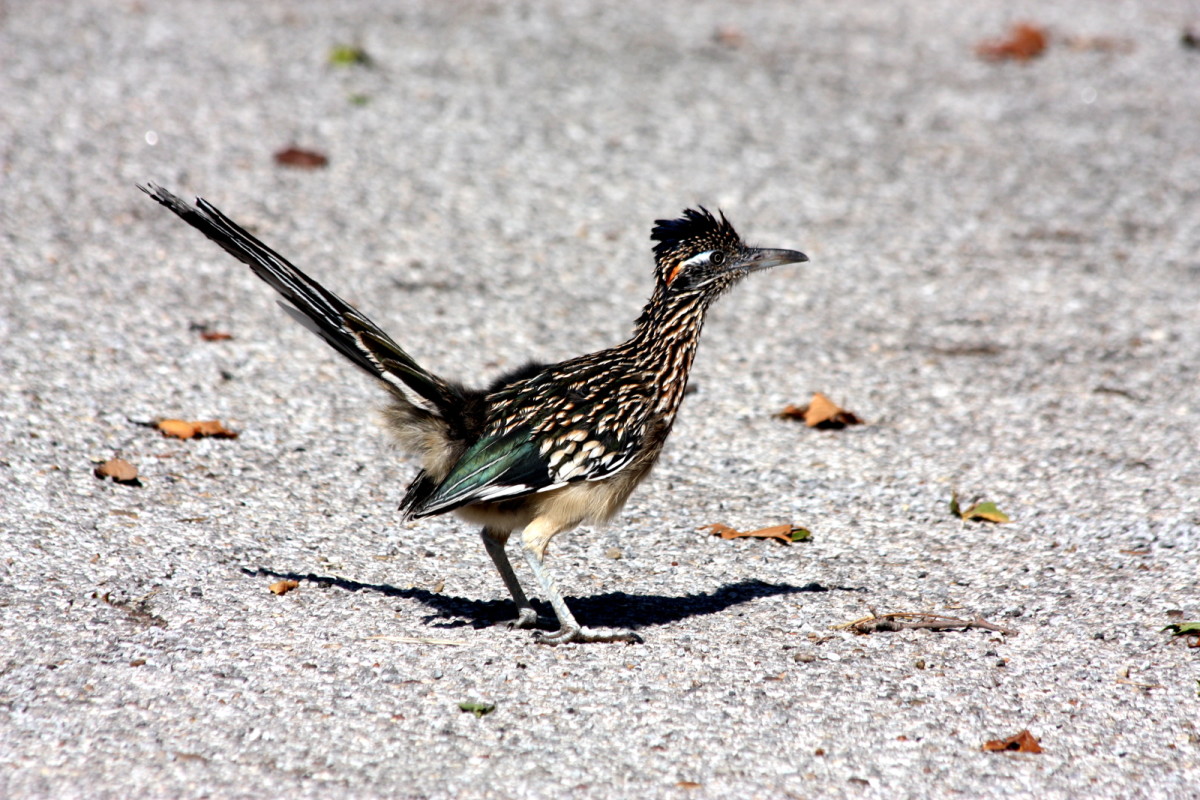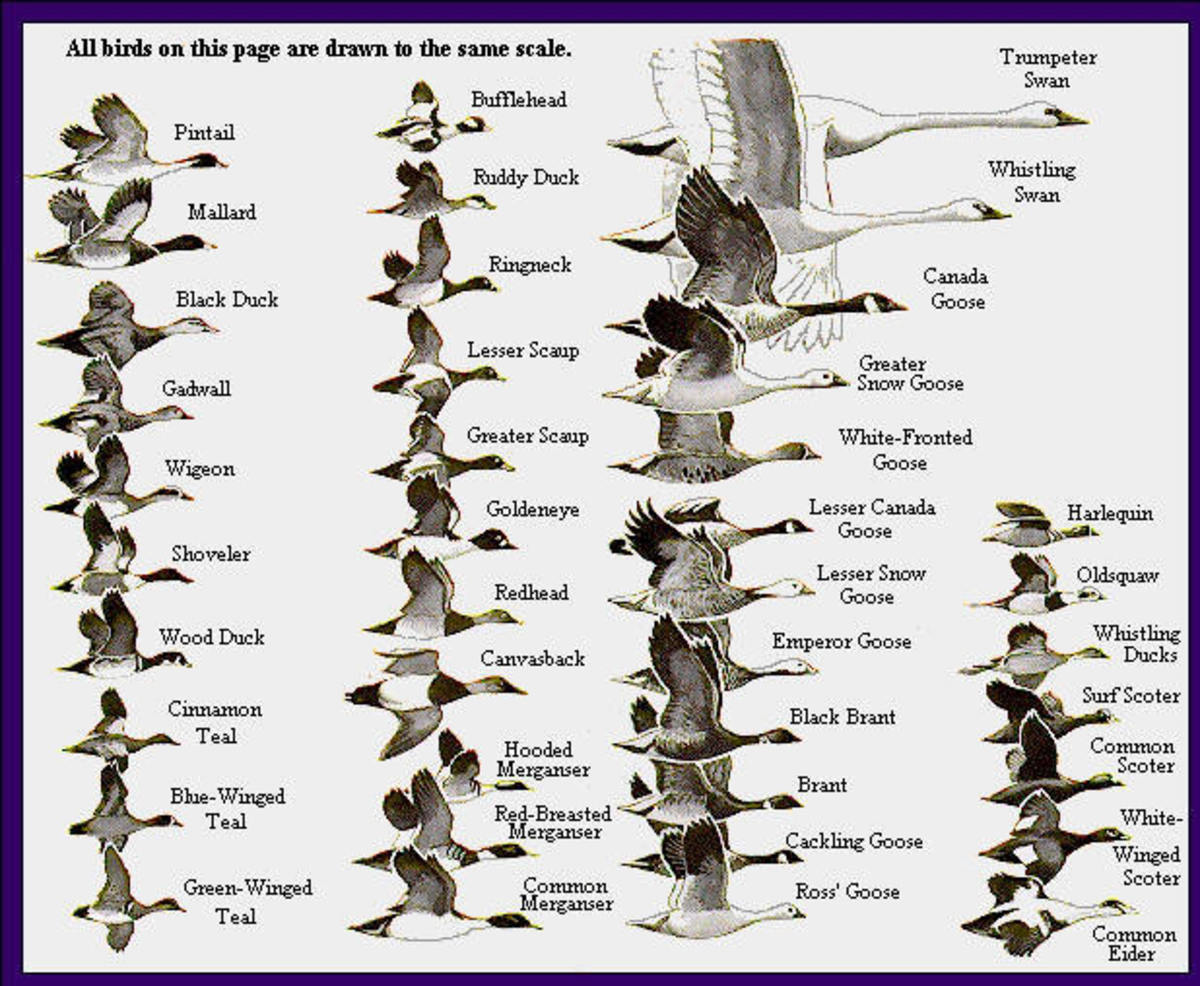Great Bustards live in Portugal and Spain and were extinct in the UK but have been reintroduced
Great Bustard
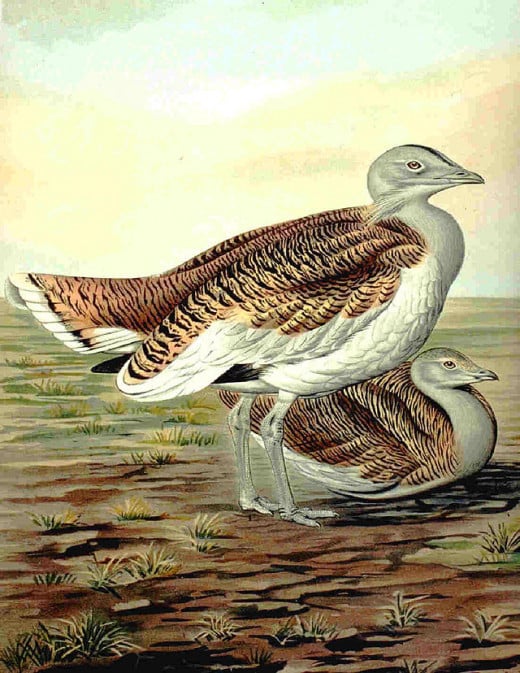
Great Bustards
The Great Bustard (Otis tarda) is a very large bird that lives on plains, steppes and open grassy areas.
It is the heaviest flying bird species. Male Great Bustards are bigger than the females and can weigh from 5.8 to 18 kg and has a 2.1–2.7 m (6 ft 11 in–8 ft 10 in) wingspan.
It is found in parts of central and southern Europe and across temperate Asia, though its numbers have been declining and its conservation status is Vulnerable with only between 31,000 and 37,000 of these birds in the world. Most Great Bustards today are found in Spain and Portugal.
The Great Bustard became extinct in the UK but has been successfully reintroduced to Salisbury Plain. The bird is still extinct in Poland, Sweden and Switzerland.
Great Bustards are omnivorous and feed on insects, small animals, including mice, lizards, frogs and the chicks of other types of bird, as well as taking green plants, cereals and some fruit. They will take grasshoppers and crickets, beetles and even wasps, bees and ants.
The Great Bustard is a sociable species of bird and will gather in large groups of as many as several dozen individuals, Apart from in the breeding season though, these groups are usually made up of either males or females. The females, being smaller birds, can get bullied by the larger males.
When alarmed the Great Bustard will often run rather than fly and it can run very fast. These birds have been known to outrun foxes.
World's Biggest Flying Bird the Great Bustard
Great Bustard displaying
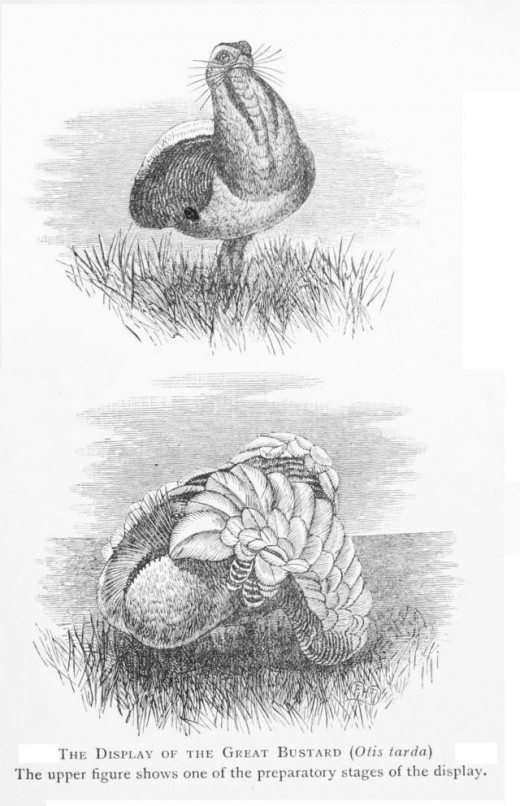
Reproduction of the Great Bustard
Great Bustards breed in March and a male will mate with as many as five female birds. Males fight to establish dominance and to compete for the attention of females. Male bustards ram each other violently and hit each other with their beaks.
The males puff up their feathers, strut and display on areas they choose known as "leks."
The nests are simply scrapes in the ground and contain between one to three olive or tan-coloured eggs.
Because the nests are made on the ground this causes a danger to them on farmland which can get ploughed, and also predators can easily come across the eggs or chicks.
Great Bustards in Portugal
Threats to the Great Bustard and its survival
Besides the danger of the nests and eggs being destroyed by farmers ploughing their fields, as well as the threat of predators, including foxes, badgers, hawks and crows. loss of habitat is a growing problem for the Great Bustard.
Dogs too are another threat to Great Bustard chicks.
The birds can also fly into electricity power lines and this is reported to have killed Great Bustards in Hungary where two very rare albino birds perished this way.
In the UK, despite being part of the Wiltshire Coat of Arms, the Great Bustard became extinct due to hunting in the 1840s when the last surviving birds at the time were killed.
Great Bustards of Salisbury Plain
Salisbury Plain
Reintroduction of the Great Bustard to the UK
Although the Great Bustard was hunted to extinction in the UK, an enterprising group of conservationists have successfully reintroduced the bird to Britain and it is possible today to see this magnificent species living wild in its natural habitat again. The project was begun in 2004 when eggs were brought from Russia to Britain, and in more recent years using eggs from Spain.
The Great Bustard Group, which is a UK Registered Charity and is supported by the University of Bath, now has established a small colony of the birds living in a location in the Salisbury Plain area. It is possible to join the Great Bustard Group and to book visits to the site where the bustards can be seen.
Salisbury Plain is managed by the MOD, and much of it is out of bounds for the general public making it a safer area for these birds to live if the Great Bustard numbers increase again in the wild.
The efforts of the Great Bustard Group show what can be done to reverse the threat to endangered species in the world today.
A visit to see Great Bustards on Salisbury Plain
© 2015 Steve Andrews


